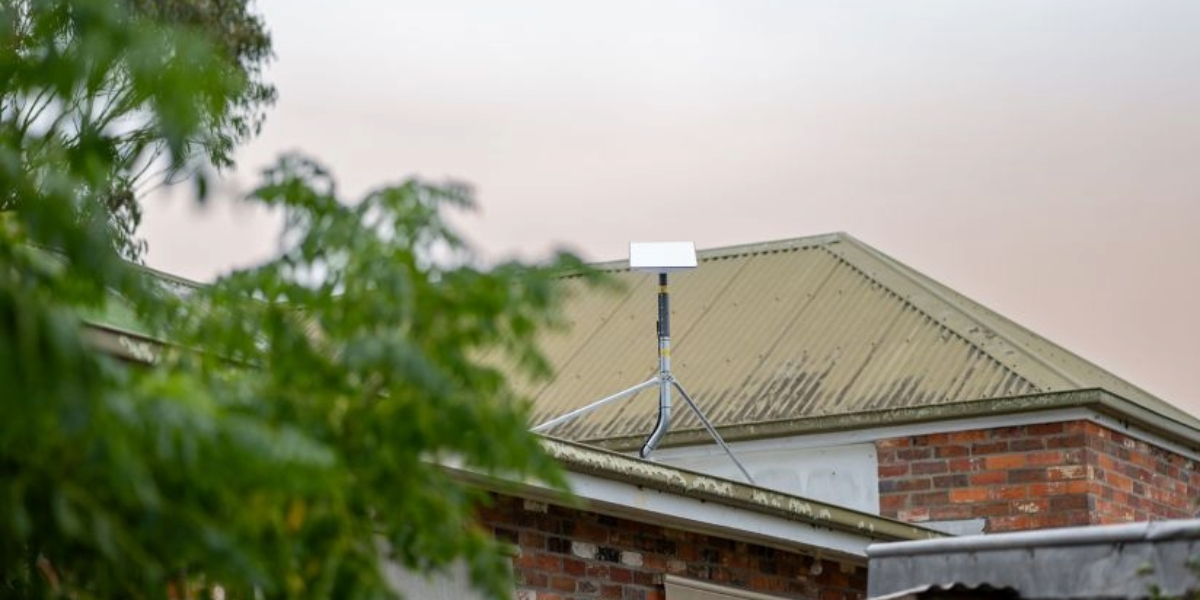There’s plenty of people outside of the main centres in the New England who have made the switch to the satellite internet service Starlink, with more likely to join the trend after Telstra finally makes its version available.
Telstra initially announced the partnership in June last year, saying that the service would be available from January for business customers. But the company required ‘months of extensive testing‘ to bring their Starlink offering online for residential homes this week.
Telstra’s Starlink plan is billed at $125 per month, and is limited to speeds of 50Mbps, much like most of their home internet plans. Meanwhile, Starlink charges $139 per month, but provides speed guidance of between 20Mbps and 100Mbps for its residential plans.
Telstra’s Starlink plans also come with its third-generation Smart Modem. This provides an easy option for using a home phone with Starlink, as well as 4G backup should the satellite drop out (which apparently does happen more than other types of internet). You can also use a wi-fi extender with the Smart Modem, and if there’s a problem, you can go into a Telstra store to sort it.
Regardless of whether you’re going with Telstra or Starlink direct, you’re looking at $599 in upfront hardware fees for the standard dish, plus additional installation costs if you want someone to put it permanently on your roof. It’s the same dish, so with either service you can opt to keep it portable if you wish, great for camping or perhaps taking it out to the paddock, yards, or shed when needed.
The Elon Musk owned SpaceX Starlink service works using Low Earth Orbit satellites, or LEOs. LEO satellites are much closer to earth than traditional geostationary satellites with multiple satellites that form part of a “constellation”, allowing them to send and receive signals much faster. As well as offering good data throughput, the proximity of these satellites reduces latency making them a great and more consistent option for services that need lower latency, like voice and video calls.
As with Starlink itself, Telstra has a 30-day service guarantee. If Starlink doesn’t end up being right for you, you can return the kit within their first 30 days and get a full refund of both hardware and plan fees.
Telstra CEO Vicki Brady said the Starlink agreement was part of Telstra’s T25 strategy commitment to launch a satellite product with the voice and broadband options being available to consumer and business customers.
“Telstra is always looking to invest in new and better connectivity options for our customers. We know that collaborating with the right partners is one of the best ways to help unlock a digital future, in this case for people in rural and remote Australia looking for an improved voice or broadband service,” Ms Brady said.
“Our teams have been out across the country testing and trialling Low Earth Orbit (LEO) satellite technology to ensure we understand where it’s the best solution for our consumer and business customers.”
Both Telstra and Optus are jumping on the LEO bandwagon. Optus has also announced a partnership with SpaceX to provide LEO services to it’s customers as part of a commitment to 100% coverage, starting with SMS messaging this year, and calls next year, from anywhere in the country. Telstra says it’s also working with OneWeb and LynkGlobal to explore and test direct to handset satellite technology.
More information is available on Telstra’s website.
Something going on in your part of the New England people should know about? Let us know by emailing newsdesk@netimes.com.au


